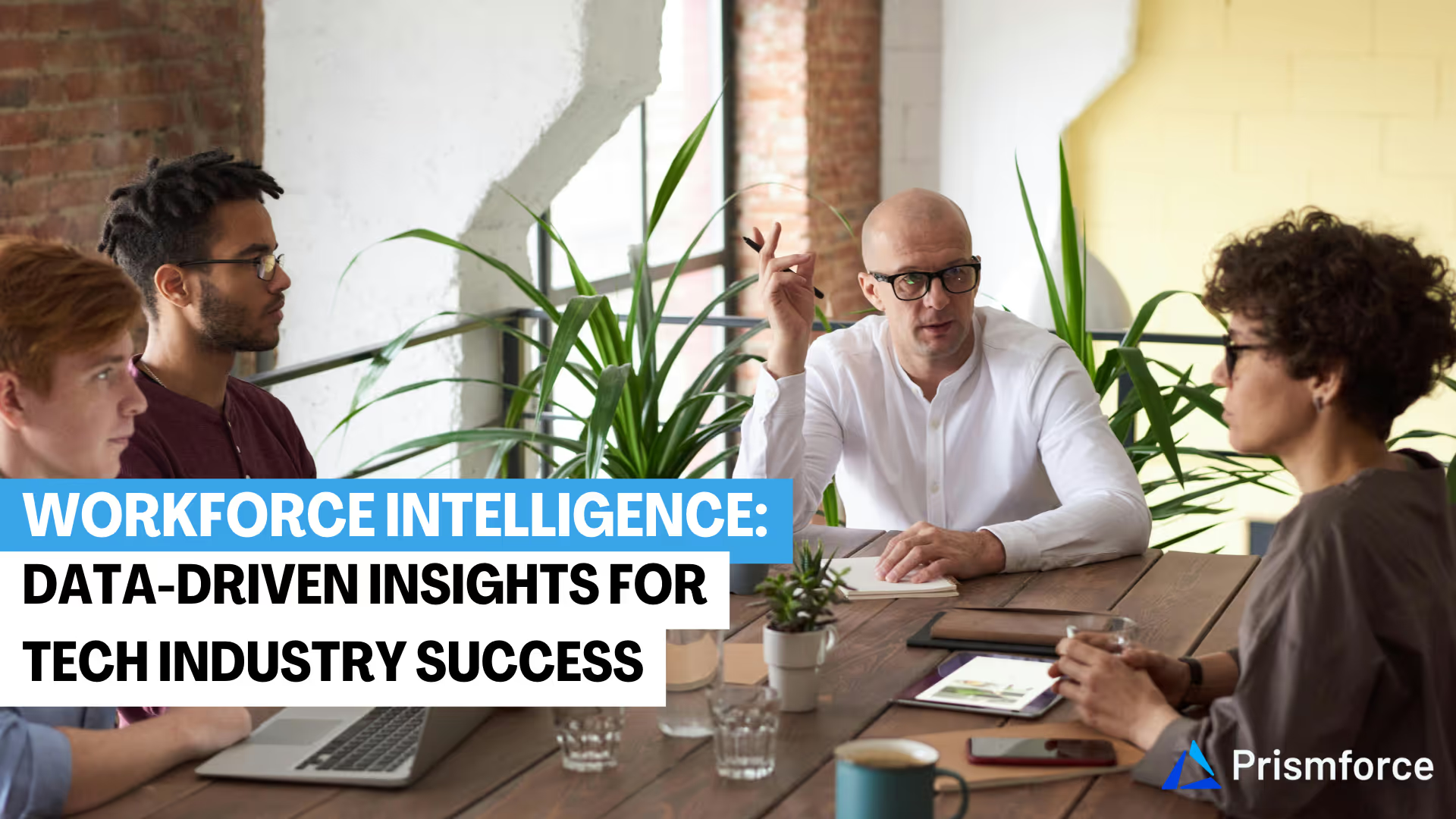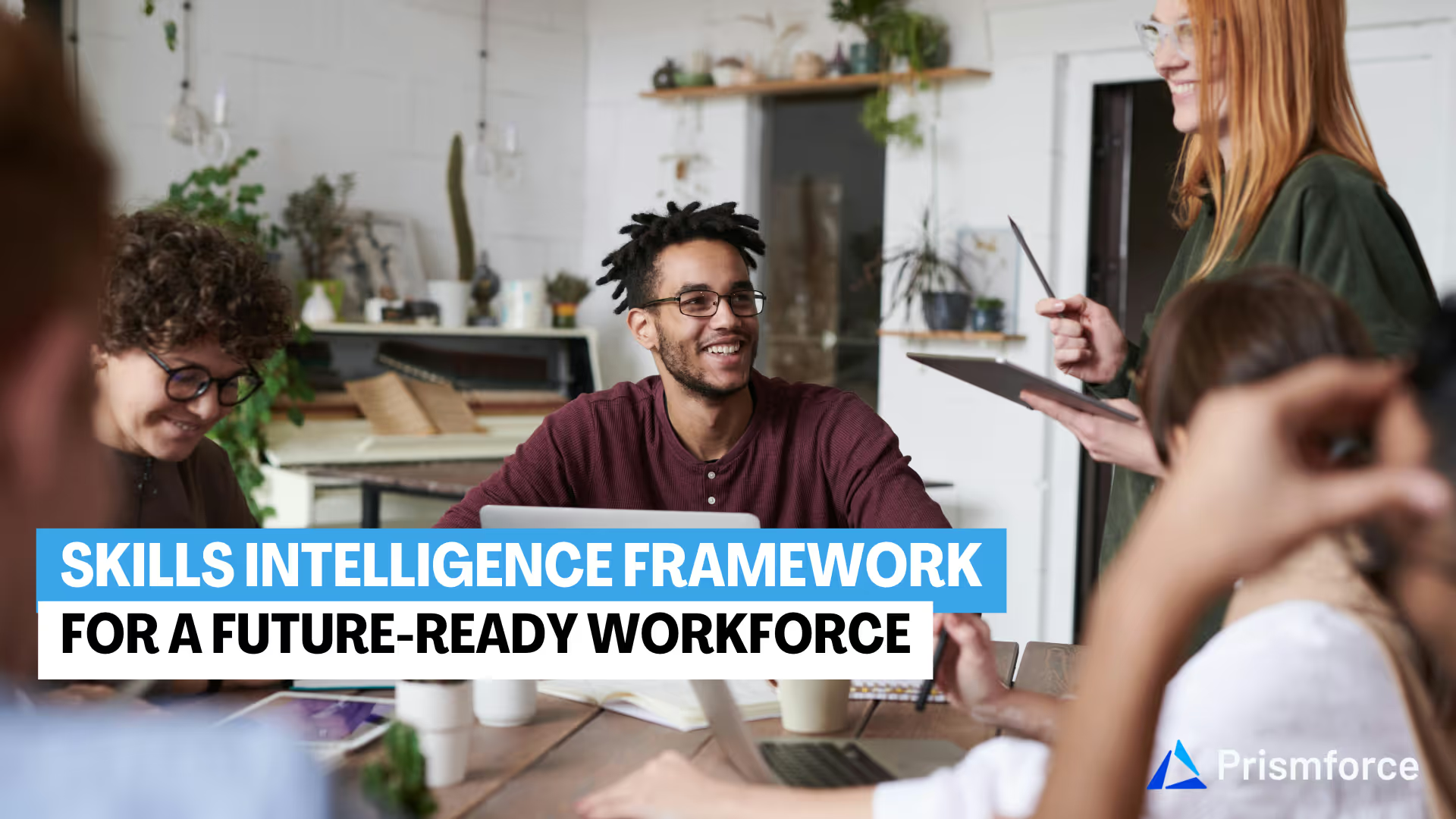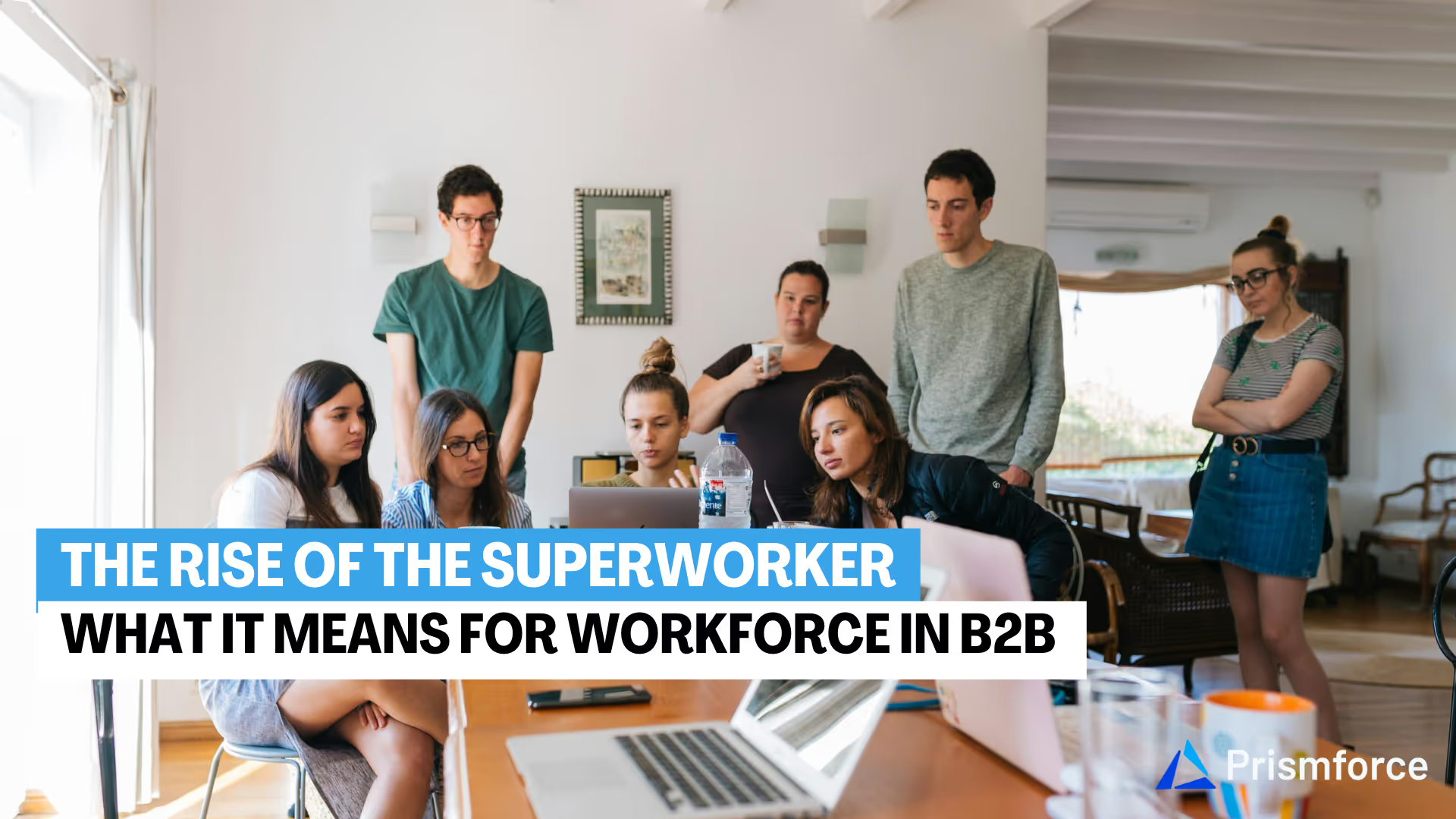
The modern workplace is in the midst of a revolution. According to the World Economic Forum, in the modern economy, over 1 billion people need reskilling, and Workforce intelligence is one of the concepts that organizations are using to their advantage.
In this article, we will explore the concept of workforce intelligence, its critical importance in today's business landscape, and how organizations can harness its power to achieve their goals and stay ahead of the competition.
What is Workforce Intelligence?
“Workforce intelligence refers to the use of AI, data analytics and machine learning that will help gain insights into an organization’s workforce, which will eventually help in decision making.”
Organizations across the globe are slowly coming to terms with the fact that employees today are looking at more than just a paycheque and a cushy cubicle. They want to be challenged intellectually, want to grow with the organization, and want to be treated as stakeholders. ESOPS and stock options are just not cutting it anymore.
Workforce intelligence ensures that your organization moves from an intuition-driven approach to a more data-driven approach in managing its human capital. So how do organizations ensure that their employees feel stimulated, while, at the same time, making sure that the right people are assigned to the right jobs? We are going to look at this in detail in this blog, along with a few other aspects on workforce intelligence, such as:
- Why is workforce intelligence crucial in today’s landscape?
- The evolution of workforce intelligence.
- Key components of workforce intelligence.
- How to use workforce intelligence to achieve business goals?
- The future of Workforce intelligence.
Let us “Start with Why,” as Simon Senek would put it, and see why workforce intelligence is crucial, especially in today’s tumultuous economic landscape.
Why is Workforce Intelligence Crucial in Today’s Landscape?
Organizations with people analytics are 3.1 times more likely to outperform their peers financially, according to this report by DDI. Workforce intelligence creates a competitive advantage for any organization, as more and more companies seek profitability and productivity.
Here are some key reasons why workforce intelligence is essential in today's business landscape:
- Talent Acquisition and Retention:
The tech industry is highly competitive, and attracting and retaining top talent is crucial. Workforce intelligence provides insights into employee preferences, engagement levels, and career aspirations, enabling organizations to develop targeted strategies for talent acquisition and retention. - Skill Gap Analysis:
As technological advancements accelerate, the skills required in the workforce are constantly evolving. Workforce intelligence helps identify skill gaps within an organization, allowing for proactive training and development initiatives to ensure that employees have the necessary competencies to drive business success. - Productivity Optimization:
By analyzing workforce data, organizations can identify factors that impact employee productivity, such as workload distribution, work-life balance, and workplace culture. This knowledge empowers leaders to implement strategies that enhance productivity and foster a more engaged and motivated workforce. - Strategic Workforce Planning:
Workforce intelligence provides valuable insights into workforce trends, demographic shifts, and talent pipelines. This information enables organizations to develop long-term workforce strategies, ensuring they have the right talent in place to meet future business needs. - Compliance and Risk Mitigation:
With workforce intelligence, organizations can monitor and analyze data related to diversity, equity, and inclusion, as well as compliance with labor laws and regulations. This proactive approach helps mitigate risks and ensures a fair and inclusive workplace.
The Evolution of Workforce Intelligence
Over the years, workforce intelligence has evolved - changing from basic record keeping to sophisticated predictive analytics. In the earlier days, workforce management mainly involved manual tracking of employee attendance and payroll.
It was not until the advent of the computers, in the 60s and 70s, that there was a wave of digitization in the HR processes. As we moved to the 90s, there was a rise of the Human Resource Information System (HRIS), that automated basic HR functions. The emergence of Big Data and advanced analytics, in the early 2000s, brought about true transformation in this field.
By 2010, 10% of companies were using some form of workplace analytics or another, and this number grew to 56% by 2019 (Deloitte report). And then came the COVID-19 pandemic, which accelerated this evolution. 71% of the companies now considered people analytics as a high priority in 2020, and this shift made it possible for organizations to carefully navigate remote work challenges and make data-driven decisions about workforce planning.
Today, technologies such as AI and machine learning enable organizations to process vast amounts of data, identify patterns and trends, and generate predictive insights. This means that organizations can
Key Components of Workforce Intelligence
Workforce intelligence is a multifaceted approach that encompasses several key components. Understanding these components is crucial for organizations to effectively implement and leverage workforce intelligence strategies:
- Data Collection and Integration:
The foundation of workforce intelligence lies in collecting and integrating data from various sources, including human resources information systems (HRIS), learning management systems (LMS), and employee engagement platforms. This data provides a comprehensive view of an organization's workforce.
- Data Analytics and Visualization:
Once the system collects and integrates the data, it uses advanced analytics and data visualization tools to uncover insights and patterns. These tools help organizations to identify trends, spot anomalies, and visualize complex data in an easily understandable format. As an example, Unilever has integrated data from over a 100 countries to create a comprehensive workforce analytics platform.
- Workforce Planning:
Workforce planning is a critical component of workforce intelligence. It involves analyzing workforce data to forecast future talent needs, identify skill gaps, and develop strategies to ensure the right talent is in place to support business objectives. IBM has an interesting use case which claims that it can predict with 95% accuracy on the employees that are likely to leave.
- Talent Management:
Workforce intelligence plays a pivotal role in talent management processes, including recruitment, onboarding, performance management, and succession planning. For example, GE uses a talent analytics platform that tracks employee skills, performance and potential, whereby there is an assurance of a good leadership pipeline. By leveraging workforce data, organizations can make informed decisions about talent acquisition, development, and retention strategies.
- Employee Engagement and Experience:
Workforce intelligence provides insights into employee engagement levels, sentiment, and overall employee experience. This information enables organizations to implement initiatives that foster a positive work environment, enhance employee satisfaction, and ultimately drive productivity and retention. An example of an organization that uses Workplace Analytics tools is Microsoft, which uses it to measure employee engagement. Microsoft does this by analyzing email patterns, meeting schedules, and collaboration habits, that will help the company identify burnout risks.
How to Use Workforce Intelligence to Achieve Business Goals
Implementing workforce intelligence is not a one-size-fits-all approach. Organizations must tailor their strategies to align with their specific business goals and objectives. Here are some practical ways to leverage workforce intelligence to drive success:
- Optimize Talent Acquisition:
Utilize workforce intelligence to identify the most effective recruitment channels, target specific talent pools, and streamline the hiring process. By analyzing data on candidate sources, hiring times, and employee performance, organizations can give a more refined approach to their talent acquisition strategies and attract top talent more efficiently.
- Enhance Employee Development:
One of the biggest challenges that organizations face is the dreaded skill gap - what the organization needs and what the skills that an employee actually has. It is here that workforce intelligence can be used to identify skill gaps and design targeted training and development programs. By analyzing employee performance data, learning preferences, and career aspirations, organizations can create personalized development plans that align with both individual and organizational goals.
- Improve Workforce Productivity:
Analyze workforce data to identify factors that impact employee productivity, such as workload distribution, work-life balance, and workplace culture. Implement strategies to address these factors and foster a more engaged and productive workforce.
- Promote Diversity, Equity, and Inclusion (DEI):
Utilize workforce intelligence to monitor and analyze data related to diversity, equity, and inclusion. Identify areas for improvement and implement initiatives that promote a more inclusive and equitable workplace culture.
- Enhance Workforce Agility:
Leverage workforce intelligence to anticipate and respond to changing business needs. By analyzing workforce data and trends, organizations can proactively develop strategies to upskill or reskill their workforce, ensuring they have the necessary talent and capabilities to adapt to evolving market demands.
The Future of Workforce Intelligence
As technology continues to advance and the business landscape becomes increasingly complex, the role of workforce intelligence will become even more crucial. Here are some trends and developments shaping the future of workforce intelligence:
- Increased Integration of AI and ML:
The integration of artificial intelligence (AI) and machine learning (ML) will further enhance the capabilities of workforce intelligence. These technologies will enable more accurate predictive analytics, automated insights generation, and real-time decision support.
- Emphasis on Employee Experience:
As the war for talent intensifies, organizations will place greater emphasis on employee experience and engagement. Workforce intelligence will play a pivotal role in understanding employee sentiment, preferences, and needs, enabling organizations to create a more compelling and engaging work environment.
- Ethical Data Governance:
With the increasing importance of data privacy and security, ethical data governance practices will become essential. Organizations will need to implement robust data governance frameworks to ensure the responsible and ethical use of workforce data.
- Workforce Intelligence as a Service (WIaaS):
As workforce intelligence solutions become more sophisticated, we may see the emergence of Workforce Intelligence as a Service (WIaaS) models. These cloud-based services will provide organizations with access to advanced workforce intelligence capabilities without the need for extensive in-house resources.
- Collaborative Intelligence:
The future of workforce intelligence will involve a synergistic combination of human expertise and AI-powered insights. This collaborative intelligence approach will enable organizations to make more informed and effective decisions by leveraging the strengths of both human and artificial intelligence.
Prepare for the Future of Work with Prismforce's SkillPrism
As the future of work continues to evolve, organizations must be proactive in adopting innovative solutions to stay ahead of the curve. Prismforce's SkillPrism is a cutting-edge workforce intelligence platform designed to empower organizations with data-driven insights and actionable strategies for talent management and development.
SkillPrism leverages advanced analytics and machine learning algorithms to provide a comprehensive view of your workforce's skills, capabilities, and career aspirations. By consolidating data from various sources, including HRIS, learning management systems, and employee engagement surveys, SkillPrism delivers a holistic understanding of your talent landscape.
With SkillPrism, you can:
- Identify and address skill gaps within your organization, ensuring you have the right talent to drive business growth and innovation.
- Develop targeted learning and development programs tailored to individual employee needs and career aspirations.
- Optimize resource allocation and workforce planning, ensuring the right people are in the right roles at the right time.
- Foster a culture of continuous learning and skill development, enhancing employee engagement and retention.
- Implement data-driven diversity, equity, and inclusion (DEI) initiatives, promoting a diverse and inclusive workplace culture.
Unlock the power of workforce intelligence and drive success in the tech industry with Prismforce's SkillPrism.
By leveraging data-driven insights and embracing a proactive approach to workforce management, organizations can gain a significant competitive advantage and drive long-term success. Embrace the power of workforce intelligence and unlock the full potential of your most valuable asset – your workforce.





